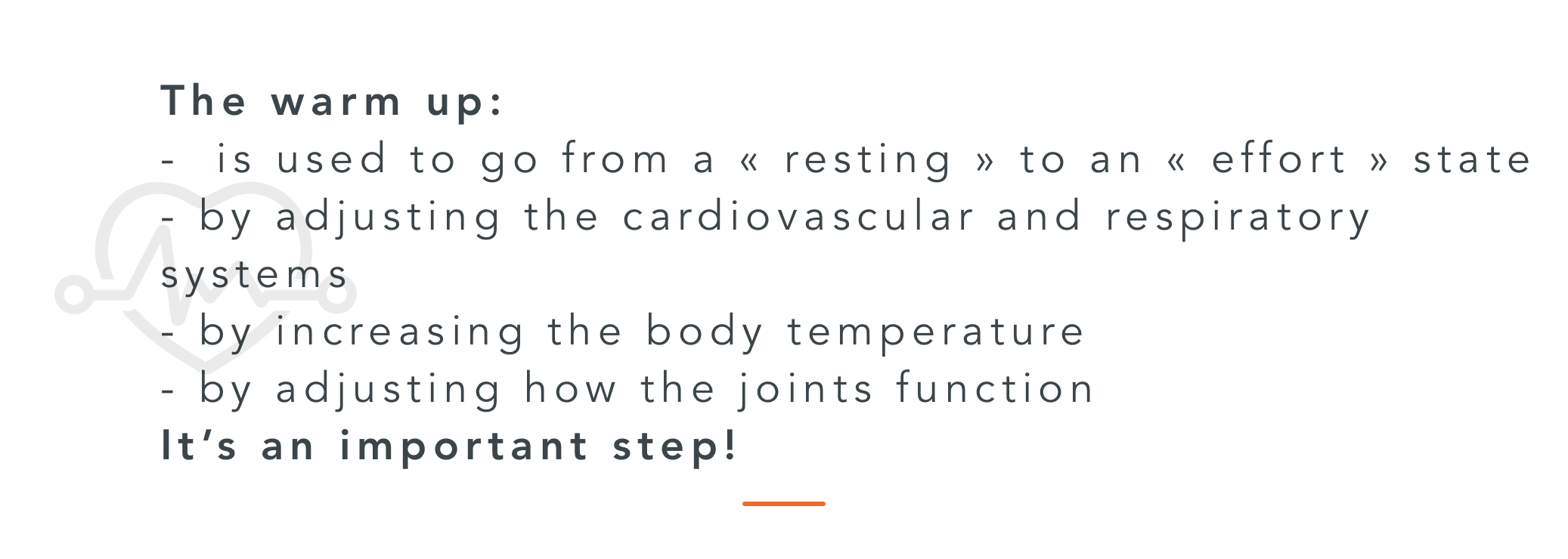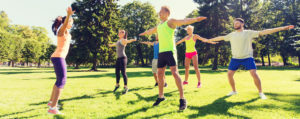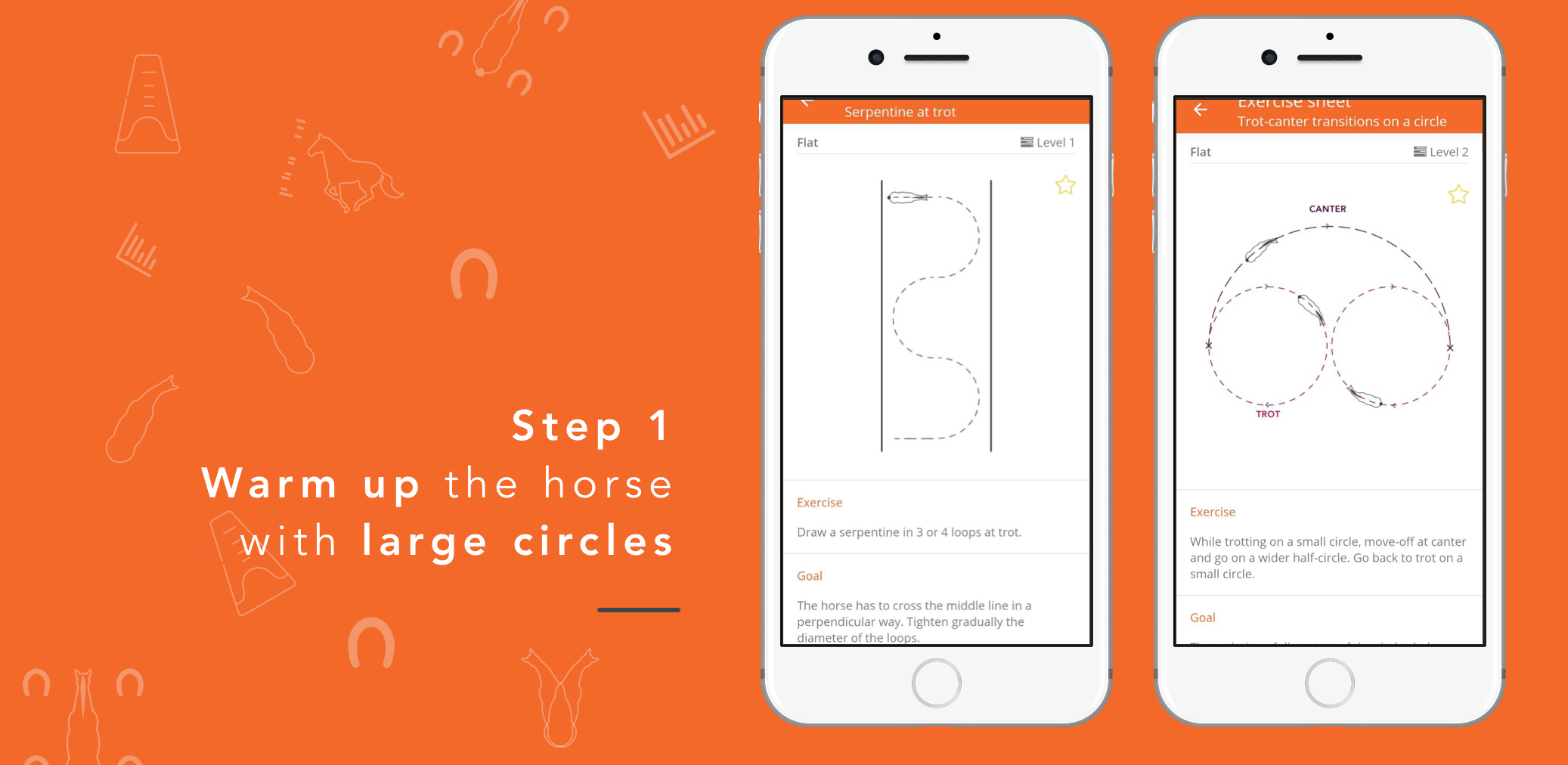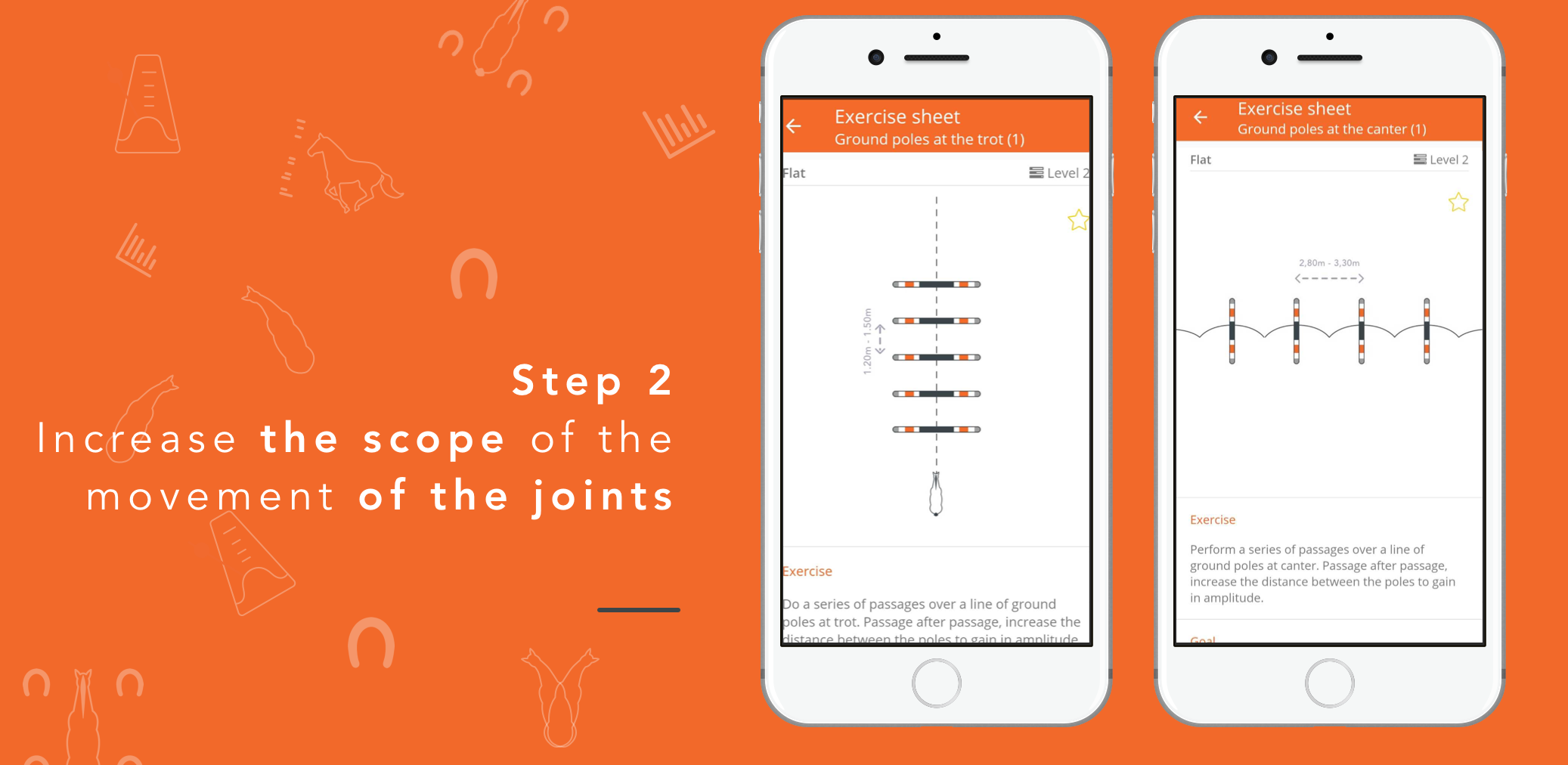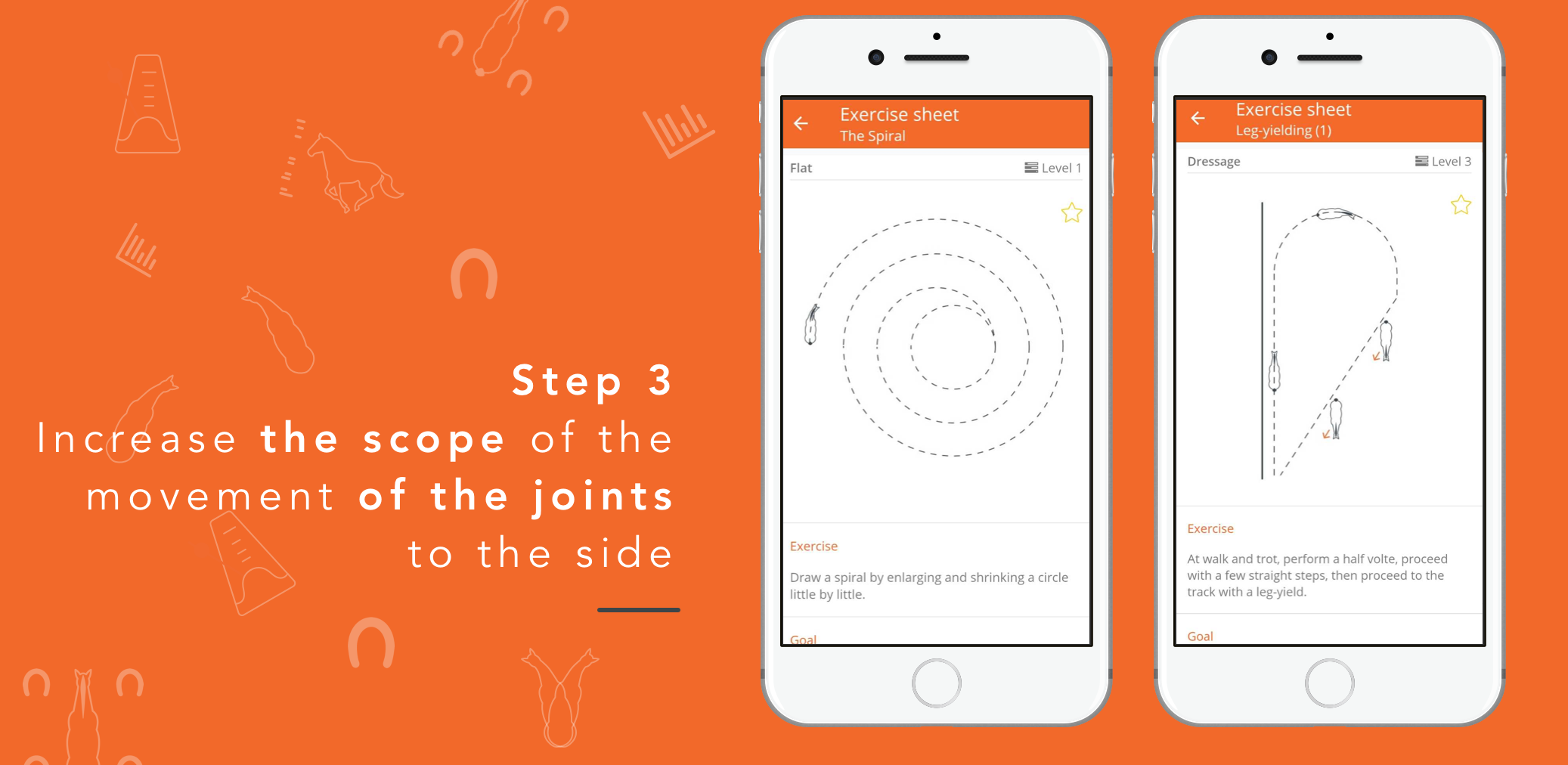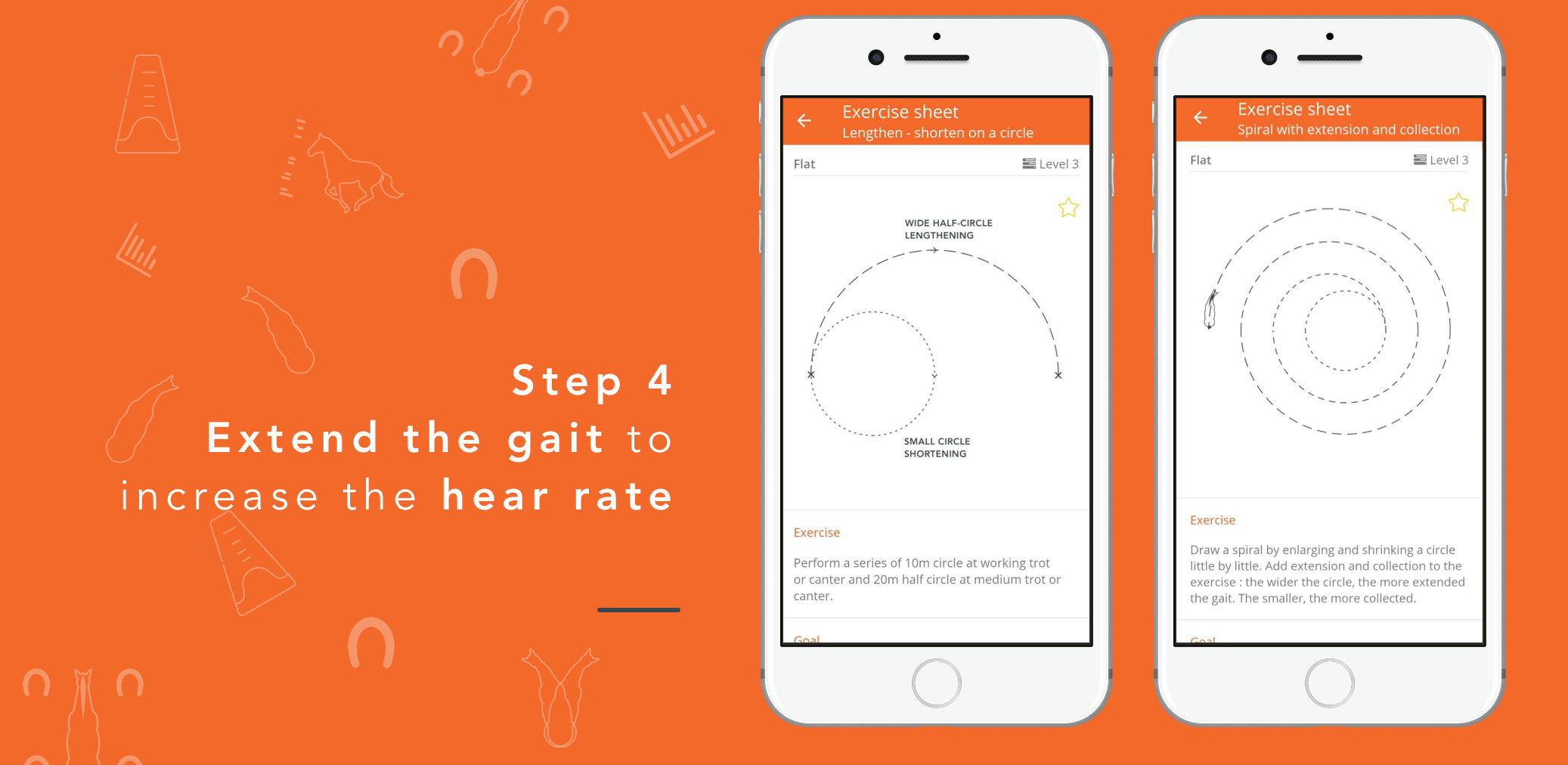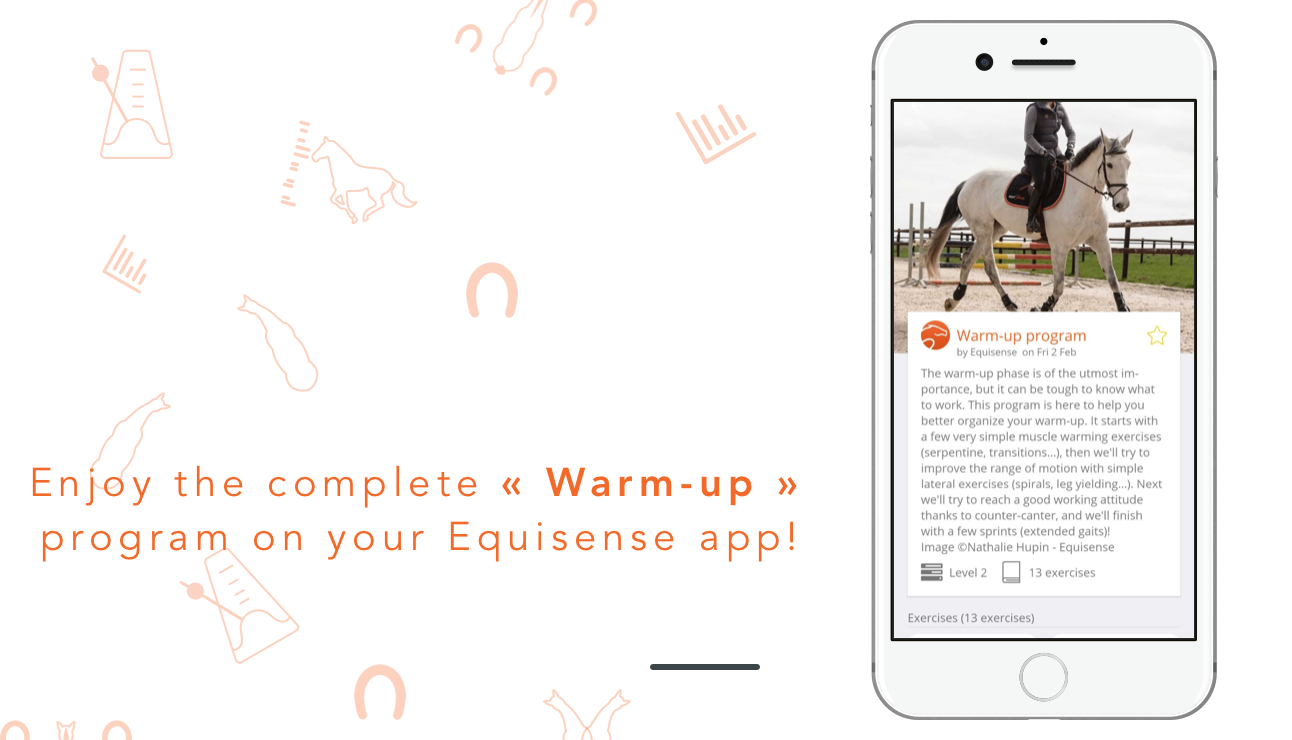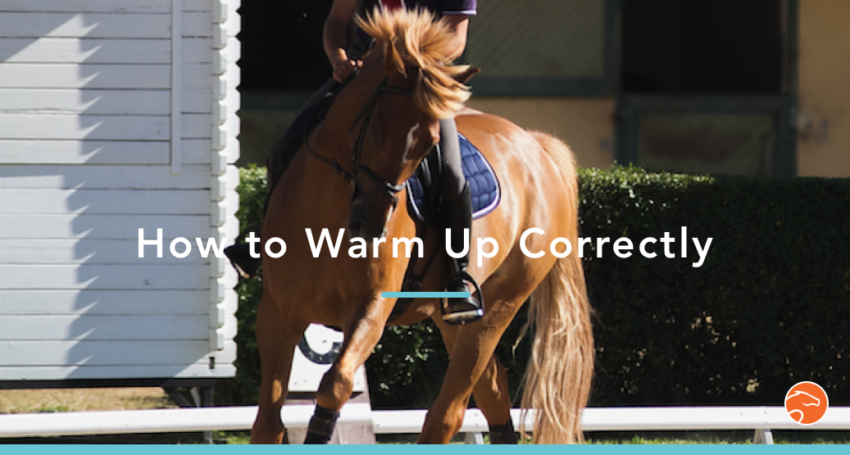
4 steps to Correctly Warm up your Horse
“Are you ready? Are your horses warmed up?” “Well uh yeah… We walked, trotted and cantered for like 5 minutes, is that enough?”
Let’s just say that… no it’s not!! Warming up is often that kind of frustrating moment where you can’t start working yet, and you have to accept that your horse is a little heavy, and it’s sometimes hard to be patient. Despite that, warming up is crucial! Let’s see why.
Table des matières
Why do we warm up? 🧐
To explain what is the point of a warm up, it’s important to remember the physiological differences between rest and effort: [1] [2]
- the cardiovascular system adjusts by increasing the heart rate. The cardiac output increases as well and the blood vessels widen (vasodilatation).
- the respiratory rate increases as well as the oxygen demand.
- the body needs a lot more energy to function and has to produce some to last during the effort
- the body creates wastes in large quantities (like lactic acid)
- the body temperature increases to allow the energy production
- but this makes the horse sweat to let the heat out
- the blood in the muscles circulates better
- the liquid in charge of the suppleness of the joints warms up and allows the joints to function better
- and we could go on forever.
What I mean is that you can’t go from a “resting” state to an “effort” state in the snap of a finger. That’s what warming up is for!
Learn more: Active recovery: How does it work?
Learn more: Here’s the only way to improve your horse’s fitness
What is a good warm up? 😳
That’s a very difficult question because there’s no definite answer. The only thing we can say for sure is that:
- The warm up has to be done gradually for every physiological aspects and every mechanism to start. The aerobic system has to start working but it’s important that the horse doesn’t enter an anaerobic lactic state: if it produces lactic acid during the warm up, it could be bad for the rest of the session or the show.
- The warm up has to be adjusted to the class or the exercise you’re going to go on and you should end the warm up by an effort close to what you’re going to ask for the rest of the session: for a human athlete, we go for an intense warm up for a sprint, and a moderate warm up for an endurance race [4].
- Try to walk with loose reins for a bit before starting the real warm up. Don’t forget that, in comparison with us, horses living in stables don’t move a lot before they start working. It’s important they have enough time to let loose at walk before they work. By using Motion, the connected sensor from Equisense, you can set goals like “I’m walking for 10mn with loose reins and then 5mn a little tighter before I trot”, and you can check if you actually follow these goals!
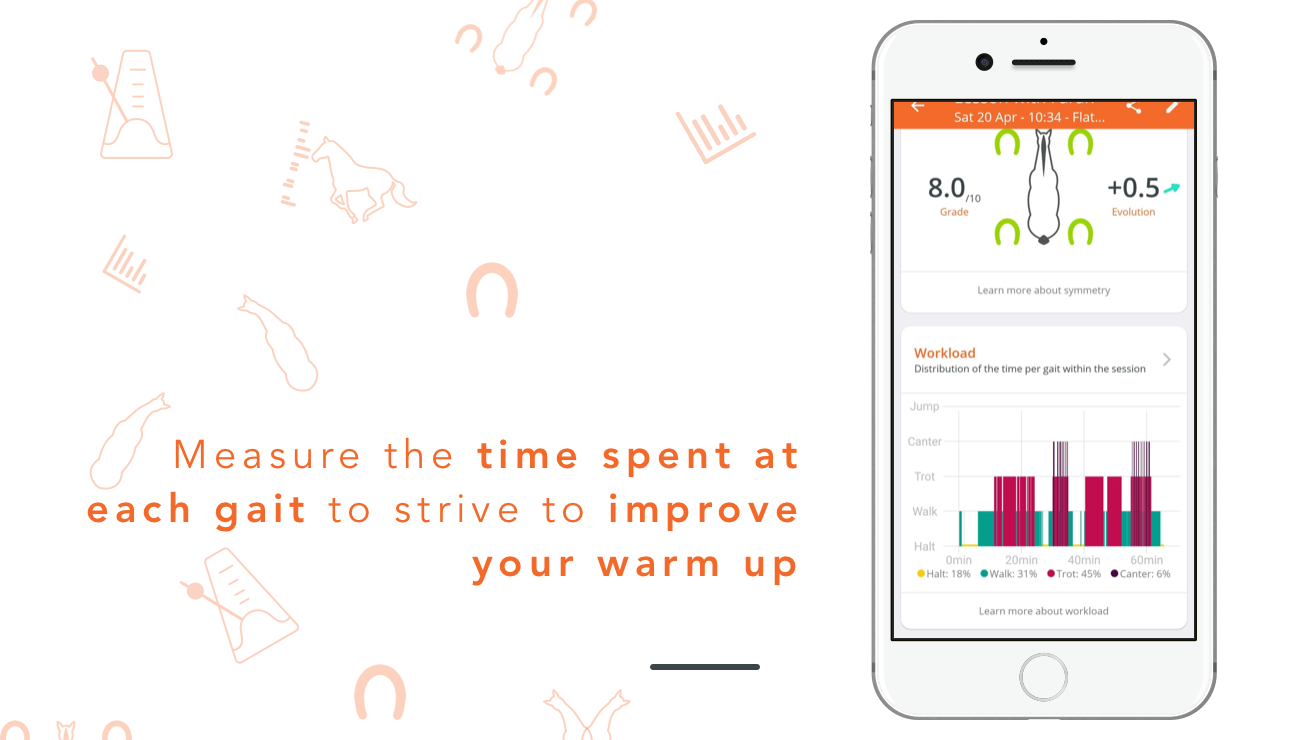
What happens for the other sports? 🔍
What’s interesting to see is that most athletes, no matter the sport, have for the majority of them more “standardized” warm ups than we riders do. Most of the time, an athlete’s warm up lasts between 10 to 30 minutes and goes as such [5]:
- A little jog to warm the muscles up
- High knees / Butt kicks or any exercise that makes the entire body work
- A few sprints
What if we warmed up our horse like this as well?
The 4 steps of a great warm up ✌🏻✌🏻
If we consider the horse as an athlete and that it should warm up like a human athlete, then our horseback warm up could look like this:
Step #1 – Warm up the horse on large curves
First, we warm up the horse by going at walk, trot and canter. We’re not looking to work on something precise, we want straight lines or large circles. It’s like going for a little jog. The body temperature rises, the joints are warmed up with effortless movements. Motion will help you see that the times you decided on are correct.
Step #2 – Increase the scope of the movement of the joints upwards
We can start going over ground poles at each gait to increase the scope of the movement of the joints and make the tendons and ligaments work. Eventually, you can raise the poles to make your horse work a little harder. It’s the equivalent of the high knees and the butt kicks.
Step #3 – Increase the scope of the movement of the joints to the side
Then we can try a few easy lateral exercises at each gait to warm up the joints on wider movements. This makes the adductor and abductor muscles work (like Side steps). This also allows you to gradually bring the horse to a “working attitude”. For young horses, you can replace this with exercises with sharper turns.
Step #4 – Extensions
You can paire/combine everything to stride extension to increase the cardio. It’s the equivalent of sprints.
You can find all the different exercises on the Equisense App (available for iOS and Android), , whether you own a Motion or not. You’ll get a lot of exercises suggestions to do during your warm up and your work to avoid making circles in the sand! There’s a program dedicated to warming up, just so you know 😇
Canter before trot? 🧐
Well why not! It’s also really good for horses with back pain. Let me explain: at trot, there is very few movements of flexion and back extension. The only flexion/extension movements we observe are completely passive and induced by the inertia of the visceral mass. The back will become rigid to resist the acceleration force of the viscera. [6]
At canter however, the flexion and extension movements are active, and the movements of the viscera are linked to them. This hurts the horse’s back way less! So if your horse’s back hurts a little at trot, don’t hesitate to canter first.
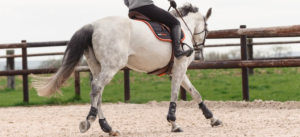
Here you go!
What about you? How do you warm up your horse?
See you soon for another article,
Camille Saute
Equisense Co-founder
